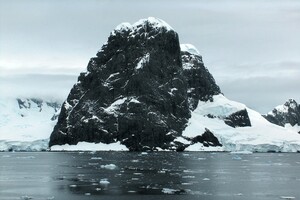More sunlight enters the planet.

Scientists from the University of Washington said that in the clouds that form over Antarctica, there are processes through which more sunlight penetrates the Earth. This is important for models that predict further climate change on the planet, according to Science alert.
Using simulations, satellite images and data obtained during the flight through the clouds, scientists have identified the process of “secondary” ice formation. This means that ice particles collide with drops of supercooled water and then break them down, creating many pieces of ice.
Read also: The world's largest companies exaggerate their contribution to climate protection – BBC
The technical term for this process is the splitting of Hallett-Mossop frost. It obscures the clouds, reducing the amount of sunlight reflected back into space and passing more down.
According to scientists, in clouds at a temperature of -3 to -8 degrees Celsius to flow down into the ocean, can be up to 10 watts of energy per square meter. Ice formation inside these clouds is very efficient, and the ice formed can also fall into the ocean very quickly. This reduces the amount of water in the clouds and changes some of their key characteristics in terms of reflectivity.
What happens inside the clouds also affects their shape, which in turn affects their ability to affect the clouds. the ocean beneath them. All these factors must be taken into account when building models for further climate change.
February is the middle of summer in Antarctica, at which time up to 90% of the sky is covered with clouds. A quarter of these clouds belong to the type described in the new study. At present, only a few models of global climate change take into account the splitting of the Hallett-Mossop frost. The authors of the new study believe that this needs to change, which will provide a more detailed picture of how the Earth's climate is changing in its various ecosystems. as the most common type of Arctic precipitation . This will happen due to climate change and the warming of the polar region of our planet.




